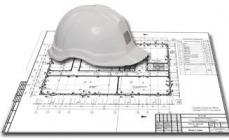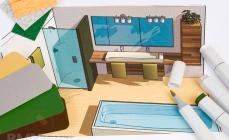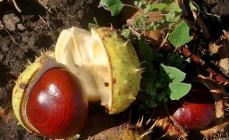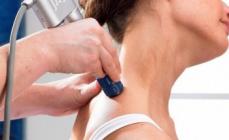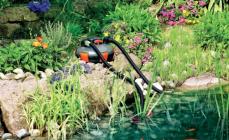Svetlana Nikulina
Master class "Secrets in the work of a speech therapist in setting and automating sounds"
The plan of the master class
Generalization of pedagogical experience on the topic.
2. Exercises for setting and automating sounds.
3. Reflection of experience:
What took useful (interesting).
Target: Providing generalization and dissemination of personal teaching experience
a wide audience of preschool educators.
Tasks:
1. Creation of conditions for the professional development of a teacher, during which experience is gained in the formation of exercises for the speech development of older preschool children.
2. Formation of an individual style of creative pedagogical activity in the process of innovative work.
Equipment:
1. Individual mirrors
2. Cotton pads.
3. Cotton buds.
4. Fingertip.
6. Cups with a lid,
7. Staged speech therapy probes.
8. Oral cavity "Ratatushka".
9. Reed theater.
10. Balloons.
11. Papyrus paper butterfly.
12. Pinwheel.
13. Plastic lips for air jet development.
14. Spiked massage ball "Hedgehog".
15. Ball with rubber bands.
16. Clothespins.
17. "Baby Elephant - Elephon"- for the development of phonemic hearing.
Stroke master class
Dear participants!
Today I will conduct a small speech therapy session with you. Master Class... I will show you a set of exercises for an individual work in the production and automation of sounds... The proposed system is based on forms and techniques works using copyright didactic games and manuals.
We all know that deficiencies are easier to prevent than to eradicate.
In recent years, there has been an increase in the number of preschoolers with disorders of general and speech development. A chain of unfavorable factors leads to the fact that already in the middle group of kindergarten we find up to 60% of pupils with speech disorders.
The most important indicator of children's readiness for schooling is their level of speech development. After all, first the child learns audio speech... Fix flaws sound pronunciation at an older age, it is much more difficult than preventing them in the early stages of a child's development.
Sound work culture of speech includes the following sections:
Development of movements of the articulatory apparatus (articulatory gymnastics);
Consistent Work over the correction of problematic sounds.
Prevention of speech disorders.
Today we will get acquainted with one of the main themes of the complex master - classes, this is " Secrets in the work of a speech therapist for setting and automating sounds».
Work for the development of the articulatory apparatus
To sound reproduction was clear, you need strong, elastic and mobile organs of speech - tongue, lips, soft palate. Since all speech organs are composed of muscles, therefore, they are amenable to training.
Gymnastics aimed at developing the organs of speech is called articulatory. Such gymnastics helps to strengthen the speech muscles and prepares the basis for a clean sound pronunciation.
You can make up fairy-tale stories to help children cope with some speech difficulties. Playing with them together with the children, we see that setting sounds is faster, and children show a keen interest even when doing very difficult articulation exercises.
Work over general and fine motor skills
Children with speech impairments often have general motor deficits. Body movements and speech motor skills have the same mechanisms, therefore, the development of fine motor skills of the hands directly affects the development of speech. That is why the development of fine motor skills should take a firm place in the activities with the child. Children with delayed speech development have poor coordination of fine motor skills of the fingers. And as a result, dysgraphia may develop. (letter violation)... The higher the child's physical activity, the better his speech develops.
Development of correct speech breathing
The key to clear pronunciation sounds and clear diction is good delivered speech breathing.
Exercises are carried out daily with children to develop speech breathing.
Development of phonemic hearing
Ability to focus on sound- we develop auditory attention.
A small child does not know how to compare the sounds but it can be done by this teach... The purpose of exercises for the development of phonemic hearing - teach child to listen and hear.
Joint Work with educators and parents, shows that close cooperation in conditions of limited exposure and the use of speech therapy techniques helps in the speedy solution of the problems of corrective action.
Thus, the efficiency is increased. the work of a speech therapist, the percentage of children with speech impairments decreases to enrollment in school, the percentage of children graduated with competent speech and correct pronunciation is increasing.
So, the main organ of the articulatory apparatus is the LANGUAGE!
Practical part
And now, I invite you to attend a speech therapy lesson and participate with me, and my assistant will help me to conduct them, get to know - Oral cavity, RatatuShka.
The practical part of your master - class, I'll start with these words:
"To rejoice even in small achievements, to strive for excellence, since it has no limit!"
1 stage in setting sounds -
ARTICULATION GYMNASTICS
We will start with you by performing articulatory gymnastics. Will we make it for what? In order for you to feel what facial muscles are, and that you really have them. In total, as cosmetologists say, we have more than 200 facial muscles. Girls do not be afraid to grimace, because a frozen grimace creates wrinkles, and articulatory gymnastics, which constantly changing face, only pumps up muscles, and almost all speech therapists retain a beautiful face oval for a long time. In real life, you and I do several actions in a time conversation: we talk and watch, talk and listen. And sometimes to introduce sound in speech you need to do not one, not two, but several actions. Thus, we will talk to you, and carry out the action with the help of our assistants: I have an oral cavity, the participants - the Tongue Theater.
1. We stretch and stretch the lips forward as much as possible, while we speak: UNDERSTANDING - and so 8 times.
2. The mouse is crawling on the wall: PI-PI-PI --- EEEEE. We stretch our lips forward as much as possible, pronounce UUUU, and while stretching our lips as much as possible, we pronounce EEEE.
3. Do the exercise "Football"... With the tongue, we take turns resting on one side of the cheek, then on the other, literally spreading the cheek. The action is accompanied by a voice similar to sound u... Do not forget that when performing this exercise we have a sharp tongue, a hard tip. And so 8 times.
4. It is said that there is a gene for the folding of the tongue into a tube. Let us roll up the tongue with a tube and blow on the tip of the tongue. If your tube does not work, we do this "Cup".
5. Exercise "Hours"... We touch the tongue to the left corner of the mouth, and fix this position. It's the same with the right corner of the mouth.
6. Exercise "Fungus"... The mouth is open. Lips in a smile. Press the wide tongue with the entire plane to the palate (tongue sticks) and keep in this position at a count from 1 to 8
7. Exercise "Delicious jam"... With the wide front edge of the tongue, lick the upper lip, and then the lower.
8. Exercise "Horse"... The mouth is open. Lips in a smile. Press the wide, spatulate tongue against the palate and tear it off with a click. Make sure that the lower jaw does not move during this exercise.
9. Exercise "Drum"... The mouth is open. Lips in a smile. Wide tip of the tongue knock on the palate behind the upper teeth, repeatedly and clearly pronouncing D-D-D sound... At first sound pronounced slowly, then the tempo accelerates. Make sure to sound D was pronounced very firmly.
Now tell me, how do you feel? Feel the rush of blood? Tingling sensation? That's good, we got all of our 200 facial muscles work!
Do not worry who does not quite succeed, after a while everyone succeeds!
Group lessons help children to adapt, individual lessons put sound... There are cases when it is impossible for a child put hissing sounds and sound P, this is due to the shortened hyoid frenum, then I refer such children to the orthodontist.
DEVELOPMENT OF SPEECH BREATHING
Exercises for speech breathing
1. Take air through the nose (do not lift the shoulders, exhale should be long and smooth, care must be taken not to puff out the cheeks (for starters, you can hold them with your hands)
2. Blow the butterfly off the tip of the nose.
3. Storm in a glass. We take two plastic transparent cups. In one we pour a lot of water, almost to the brim, and in the other we pour a little. We invite your child to play "tempest in a glass" with the help of cocktail tubes. To do this, into a glass where a lot of water needs to be blown weakly through the tube, and into a glass where there is little water, you can blow strongly. The child's task is to play so as not to spill water.
4. Inflate the balloon without inflating your cheeks.
5. Pinwheel, lips.
FINE MOTOR DEVELOPMENT
1. Massage ball.
2. Ball with rubber bands.
3. Clothespins.
4. Su-jok therapy.
SOUND SETUP [P]
We performed articulatory gymnastics with you, have worked over fine motor skills, and now it's time to move on to sound production... In this case, we will put sound [R]... For correct pronunciation sound P is necessary to make our tongue tip tremble. Just here we need to remember the exercise again. "Drummer".
(I point at 1 person using a speech therapy probe, the rest try to do the same, only using my finger and fingertip on my own).
DEVELOPMENT OF PHONEMATIC HEARING
Hear - slam
An adult pronounces a row sounds(syllables, words); and a child with closed eyes, hearing a given sound clapping his hands. (The child does not see your articulation).
Small teacher"Baby Elephant - Elephon"
Tell your child what his favorite toy wants learn right, talk. Ask the child "explain" toy, as this or that item is called. At the same time, make sure that the baby pronounces the words correctly and clearly.
An adult shows the child a picture and names the object, replacing the first letter (forota, korota, morota, gate, porota, khorota)... The child's task is to clap his hands when he hears the correct pronunciation.
The game "Telegraph"
To play you need cut strips of paper and a pen. You're giving telegram: "The baby elephant got sick"... The young telegraph operator lays out as many strips as there are words in a sentence. And then on each strip he draws as many circles as there are syllables in the word. Telegram "Baby elephant got sick" will look So: two paper strips with three circles each.
We work out sound P in isolation and in syllables.
"Rib - fist - palm - clap"
Now we will do something like this traffic: rib - fist - palm - clap (showing)... And now you will understand the stages of growth introduction sound to speech... We do all movements together.
1. rib - fist - palm - clap;
2.p - p - p - p;
ra - ra - ra - ra;
ro - ro - ro - ro;
ru - ru - ru - ru;
ry - ry - ry - ry.
3.ra - ro - ru - ry
Great, well done! Hard? Hard.
And finish your master- class I would like a poem that characterizes me as speech therapist:
Patience and creativity
Perseverance and victory -
Here are the main steps
V the work of a speech therapist.
All Nadi, Vani, Viti
Should speak
And it depends on you -
To be or not to be.
The soul hurts for everyone.
Everyone wants to help.
More than once a question: "What to do?"
Chased me all night.
Sometimes you go with bags
And the tongue "Fungus",
Or "Horse" claps
Ile lips Proboscis.
Suddenly you crackle "Motor"
Several times in a row
And you catch the wary
Passing sight.
So day after day -
Down and up
The tongue flies
Work so hard
Not every one of you could.
And ... appeared the sounds
And perhaps afterwards, syllables
And there the words have already gone
On the right road.
At the very first meeting
We often hear: "Datte",
And goodbye clear:
"Health and happiness to you!"
And I am without false modesty
I'm not ashamed to admit
That I am my profession
Really proud!
This is my master - class is over, many thanks to all for your attention!
The manual for speech therapists, preschool teachers and parents includes speech material for speech therapy and general developmental work with children to form the correct pronunciation of sounds. The author's recommendations will help to organize correctional intervention for adults in a form that is interesting for children. The book can also be used in work with children with age-related pronunciation deficiencies, for the general development of speech: improving diction, enriching vocabulary, developing speech hearing, preparing for sound-letter analysis.
The work belongs to the genre of Pedagogy. It was published in 2014 by AST Publishing House. On our site you can download the book "Home lessons of a speech therapist" in fb2, rtf, epub, pdf, txt format or read online. The rating of the book is 4.83 out of 5. Here you can also refer to the reviews of readers who are already familiar with the book and find out their opinions before reading. In the online store of our partner, you can buy and read a book in paper form.
1. Stick out your tongue and hold a straw on it for as long as possible.
2. Suck the gummy spaghetti into your mouth through your lips extended into a tube.
3. The same long marmalade must be clamped with your lips and pulled by your hand. And we must try to keep the gummy with our lips!
4. Open your mouth and try to keep the straw in balance on your tongue. You can press it against your upper teeth, but you cannot close your mouth.
5. Make a mustache! Hold the straw against your upper lip with the tip of your tongue.
6. And now we make a mustache, holding the straw with our lips.
7. Now the task is more difficult: the straw must be held in an upright position (almost), clamping one end between the lower teeth and tongue.
8. Hold the ball-candy (or cereal) in the tongue, as in a cup.
9. Lick the chupa-chups when it is from the side, from above, from below.
My favorite spaghetti: great environment for toddler development:
1. Sensory sensations are very vivid, especially when comparing semi-finished and finished products;
2. Variety of applications for the development of finger dexterity (winding on an object, laying out drawings, making heaps in height, forming caves and pits, stringing horns or beads, counting to a given amount, sticking into plasticine for finger strength, getting into holes to train the eye) ;
3. Variety of applications for the development of lip dexterity: holding the object with the compressed lips for a certain time to form a "closed mouth", drawing into the mouth to form elongated lips, holding in the "mustache" position to activate the upper lip
Taking care of your oral cavity after practicing with snacks
Drink water in small sips through your slightly clenched teeth.
Don't throw your head back.
Go for it and you will succeed



30 best exercises for developing diction according to a speech therapist
A person is not born with the ability to speak, all the more clearly. If the child has problems with the pronunciation of certain sounds, articulatory exercises can help him. This is a set of exercises aimed at correcting these difficulties. When is it sufficient, and when is a more serious approach required? What articulatory gymnastics exercises can you do at home yourself? Speech therapist Olesya Yugova reports.

What is articulatory gymnastics

Children of the first years of life very often distort sounds that are difficult to pronounce, because their speech organs are still developing. There are practically no babies that are perfectly clear.
For a pure pronunciation of sounds, correct articulatory motor skills are required, that is, the coordinated activity of the organs of the speech apparatus. If there are any problems in articulatory motor skills, they will always be reflected in sound pronunciation.
When talking, we use about a hundred muscles, including the muscles of the neck, chest, face, tongue, soft palate. Many more neurons are used to control all of these muscles than when walking and running. Articulatory gymnastics is aimed at those organs in which there is musculature: tongue, lips (circular muscle of the mouth), facial muscles. But first of all, it is intended for the language. The tongue is the main organ of speech, and the development and strengthening of its muscles will help to pronounce all sounds more accurately and clearly.
Types of articulatory gymnastics
Such gymnastics is active and passive. Most often, speaking of articulatory gymnastics, they mean it active form: one that the child performs himself. It is suitable in cases where articulatory motor skills are not impaired, but simply needs to be improved and worked out in individual movements.
But there are also more serious situations, such as dysarthria, when the pronunciation side of speech is disturbed as a result of damage to the nervous system, and the mobility of the speech organs is limited. In this case, it is extremely difficult or impossible for children to perform such gymnastics on their own. After all, their organs of speech are not ready for this.
Used here passive gymnastics: an adult with his own hands or with the help of devices - probes, spatulas, brushes - performs the movements and postures that we would like to get. For example, very often children with motor disorders cannot raise their tongue up. Naturally, in this case, they cannot clearly pronounce the sounds that require this movement. And it will hardly disappear by itself, serious work is needed on this.
I would also like to dwell on such a problem as a short hypoglossal frenum. It can also be the reason for the limited mobility of the tongue. It can be stretched a little through exercise, but if it is too short, then to normalize the sound pronunciation, all that remains is to cut it.

What kind of gymnastics does your child need?
Try this test: ask your child to show their tongue. Look for the following signs:
the child cannot stick out and fix the tongue upon request,
can stick it out only partially and quickly pulls it back in,
cannot lift it up or swing it from side to side,
when lifting the tongue up, the lower jaw rises with it,
the protruding tongue begins to tremble or deviate to the side,
profuse salivation is observed,
the child does not clearly pronounce several groups of sounds at once (hissing, whistling, sonorous),
the pronunciation of not only consonants, but also vowels is broken (pronunciation is averaged, there is no clear difference between the sounds).
If several of the listed signs are observed, then, most likely, the child, in addition to consulting a specialist, needs exactly passive gymnastics and speech therapy massage. In the complex, they will prepare the baby's speech apparatus for active articulatory gymnastics, make it possible to produce sounds.
It is better to learn about passive gymnastics techniques during a consultation. The fact is that violations can be different, there is no universal exercise that would suit everyone. Only a specialist can explain which techniques will be most effective in each case.

General principles of articulatory gymnastics

Regularity. This means that daily five-minute sessions will be more beneficial than one-hour gymnastics once a week.
Game form... Articulating gymnastics can be not only useful, but also for the baby.
Visibility. The more analyzers (vision, hearing, touch) are connected during exercise, the more effective gymnastics is. How to achieve clarity? You can use a mirror in which the child will see his reflection. The adult himself, sitting opposite the baby, can act as a model for performing movements. Use pictures, videos with other children doing this gymnastics. Find out empirically what works best for your child, what motivates him the most.
Convenience. Gymnastics should be done in a comfortable position: the back is relaxed, the hands are calm, the head has support. The child should be comfortable.
Gradual complication. Try the lightest exercises first, gradually. Each time, enter no more than one new exercise, and only if all the previous ones have already been worked out well.
Expediency... If the child copes with all the exercises very easily, it is worth considering whether he needs this gymnastics at all. After all, the main task of these exercises is to learn how to do what is not yet very good at it.
Correct attitude. It should not be considered a panacea, it is just one of the methods.
Gymnastics techniques
These active gymnastics exercises, aimed at statics or dynamics, you can easily master yourself. Each pose is held for 5-7 seconds, repeated several times.
"Pipe". The lips must be folded into a tube and extended forward as much as possible.
"Fence". We explain that you need to smile in such a way as to show your teeth.
Alternating exercise "Dudochka" and "Fence".
"Rabbit". The upper lip needs to be lifted to reveal the incisors.
"Angry horse"... You need to portray the snorting of a horse. Exhale the air forcefully through your mouth, without opening it. This will cause the lips to vibrate.
"Piglet". It is necessary to stretch the lips with a tube, and then use closed lips to rotate in a circle in different directions.
"Horse". The child should click his tongue, sounding the clatter of hooves.
"Fungus". The tongue is tightly applied (sucked to the palate) and held in this position.
"Harmonic"... Keeping the tongue in the "fungus" position, you need to open / close your mouth several times.
"Pop the balloon." The cheeks inflate, then the child must lightly hit them so that the air comes out.
"Hamster". First, both cheeks are inflated, then the right and left alternately.
"Needle". Narrow tongue protrudes as far as possible.
"Watch". Open your mouth and with the tip of your tongue alternately touch the left and right corner of the mouth.
"Cup". With your mouth wide open, you need to hold the tongue up.
"Focus". Raise your tongue to the "cup" position and gently blow on the tip of the nose. You can put a piece of cotton wool on the tip of your nose.
"Delicious Jam". The upper lip is licked with a wide tongue (you can lick off real jam).
"Painter". With the tongue we draw across the palate from front to back (from the teeth to the throat). You can tell your child that the tongue is a paintbrush that paints the sky.
"We brush our teeth"... The tip of the tongue should be drawn along the upper and then along the lower teeth from one edge to the other.
"Monkey". Open your mouth slightly and place your tongue between your lower lip and lower teeth. At the same time, the lips are drawn together.
"Bulldog". From the "monkey" position, translate the tongue into a position between the upper lip and upper teeth. The lips are drawn together.
"Circle". The mouth is closed. The tongue moves from the inside, smoothly outlining a circle with the tip of the tongue.
"Sail". The end of the tongue rests on the upper teeth and is held in this position.
"Swing". The mouth opens and the tongue moves up and down in turn.
"Drummer". Smile, open your mouth, put the tongue behind the upper teeth, loudly, distinctly, repeat repeatedly: "D-D-D-". Gradually accelerate the pace, do not bring the teeth together.
"Kneading the dough." The tongue rests on the lower lip (as with the "shoulder blade"), while the mouth opens and closes, the lips slap on the tongue.
"Let's bite the tongue." Smile, open your mouth, bite the tip and center of your tongue.
"Where is the candy?" You need to close your mouth tightly, pressing the tip of your tongue on one or the other cheek from the inside.
"Turkey" ("Chatterbox"). Smile, show your teeth, open your mouth, put a wide tongue on the upper lip and make quick movements with the tip of the tongue along the upper lip back and forth, trying not to pull the tongue from the upper lip.
"The steamer is humming." Smiling, you need to bite your tongue and say "s" for a long time.
Do these exercises regularly, but without turning them into a duty for the child, and you will definitely see progress! And don't forget about others.

